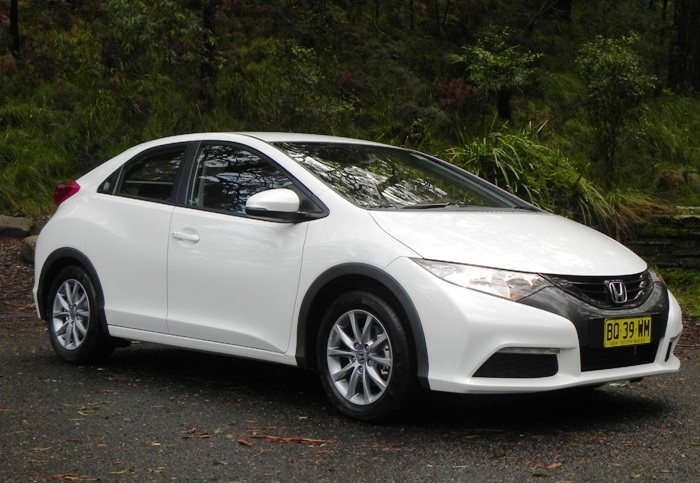
Car reviews
Read our expert car reviews - where we give insight into the latest vehicles to hit our roads.
13 July 2012
Honda has re-started their engines in a race to rewind their brand image back to yesteryear when the nameplate was a stronger force to be reckoned with. The quake and resultant tsunami that ravaged the manufacturing plants didn’t do the company any favours, but some things you just have no control over.

In the space of a fortnight, Honda has launched two new models into the NZ marketplace with the introduction of the new Euro Civic and CRV. A fresher looking line-up has been well overdue and essential in keeping consumers’ interests alive.
Honda have re-started their engines in a race to rewind their brand image back to yesteryear when the nameplate was a stronger force to be reckoned with. The quake and resultant tsunami that ravaged the manufacturing plants didn’t do the company any favours, but some things you just have no control over.
In the space of a fortnight, Honda has launched two new models into the NZ marketplace with the introduction of the new Euro Civic and CRV. A fresher looking line-up has been well overdue and essential in keeping consumers’ interests alive.
The 1.8 litre i-VTEC engine with outputs of 104kW and 174Nm is being used and burns up 6.1L/100kms of fuel for the manual transmission and 6.5L/100km for the automatic. The two transmission options available are the five speed automatic incorporating paddle shifters located behind the steering wheel and a six speed manual including Hill Start Assist (HSA).
The Euro Civic, as the name suggests has been designed and built for the demanding European marketplace. The front end looks like it has been stamped with the letter “Y” and coloured in black to split the bumper, while the shopping trolley handle rear spoiler incorporating the brake light flows effortlessly into the bulging tail lamps sitting up nicely on the bodywork and give the car a wider looking stance.
Honda have made a concerted effort to improve aerodynamics on the car, with their fighter jet inspired concept effectively resulting in a cda (drag coefficient) improvement of eight percent from the previous model and going a long way in assisting fuel consumption which has seen a thirteen percent improvement.
The interior has kept to the same theme in a bid to provide the driver with a personal cockpit space with the trim seemingly wrapping around the driver and providing easy to reach gadgetry. To no-one’s surprise, Honda has kept with their controversial two tier instrument cluster synonymous with the Civic range. The rear 60:40 split magic seats provide various different folding configurations and are a big plus point for loading odd shaped items. The boot has 400 litres of loading space with the seats up and folding the seats flat provides 1210 litres.
Looking at the latest generation Civic Hatchback it’s hard to believe it’s anything more than a face-lifted version of the previous model that never made it to our ports, thus creating a generation gap in the Civic line-up. However, nearly all the components are new, with thirty percent shared from the Japanese market sedan, making this essentially an entirely new car.
The suspension which is said to have been Autobahn tested for high speed stability and cobble road tested in Italy to ensure it has the ability to soak up all the bumps in the road proved to be pretty adequate on our road test. It has been fitted with a torsion bar rear suspension mounted on fluid filled bushings to help soften the ride while the front has MacPherson struts setup. The NVH levels have been extensively reduced by including an extra ten kilograms of strategically placed sound deadening materials compared to the previous model. Improvements were instantly noticeable when driving the car around Sydney’s road network, although the true test will be on our course chip seal surfaces.
On the twisty open road test route, the car cornered with confidence although we found the steering a little on the light side and the undecided automatic transmission was frantically trying to find its comfort zone.
Passive safety features include two ISOFIX attachments, three seat tether points and six airbags, managing a five star Euro NCAP and ANCAP safety test ratings.
Active safety features are ESC, ABS, EBA, EBD, VSA incorporating Traction Control and the tyre deflation warning system which uses wheel speed differences to monitor/detect a deflating tyre.
Two specification levels are on offer; the Euro S offered in both manual and auto, while the Euro L is available with the automatic transmission only. The Euro L adds leather seats, front fog lamps and a reversing camera to the climate control air-conditioning, daytime running lights and a raft of other features that come standard across the range.
Pricing kicks off at a reasonable $32,900 for the Euro S manual option, $34,900 for the auto and $38,900 for the Euro L.
Honda has been watching enviously while the rest of the field have been enjoying progressive sales figures in the second hottest segment of the market. They are confident they can get into the action with their new entrant and sell around one thousand units over a twelve month period.